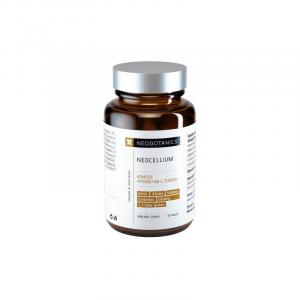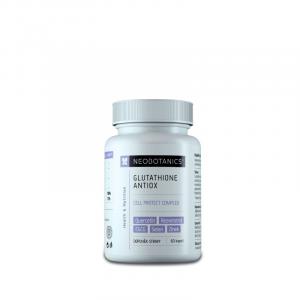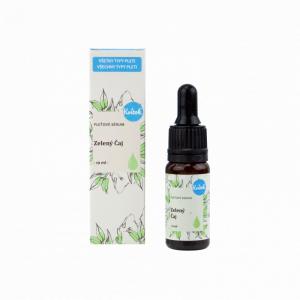
A diet for gout is a key step toward better health and well-being.

What to Eat with Gout? How a Sensible Diet Looks and Why It Matters More Than You Think
Gout, also known as the disease of kings, is a metabolic disorder that primarily affects the joints and is caused by an increased level of uric acid in the blood. Gout attacks are not only painful but can significantly reduce the quality of life if not treated properly. This is where a well-chosen diet plays a key role. A diet for gout is not just an additional measure – it can be a crucial step in managing the disease without the need for frequent medication use.
Changing one's diet is often the first recommendation from doctors. But what exactly should you eat? And what should you avoid completely? Many people struggle with lists of foods, search for purine content tables, explore recipes, and try to align recommendations with everyday reality. Yet the basics of a proper diet are not complicated, and with a little planning, you can create a menu that is not only healthy but also tasty.
How a Gout Diet Works
Gout is caused by the accumulation of uric acid, which is produced during the breakdown of purines – substances found in certain foods. When the body has too much or cannot effectively eliminate it, it begins to accumulate and crystallize in the joints, causing painful inflammation. The goal of a diet for gout is to reduce purine intake, while still maintaining the overall nutritional value of the diet.
Hydration plays an important role – adequate water intake helps eliminate uric acid from the body. In addition, maintaining a healthy weight is also significant. Being overweight increases the risk of attacks and complicates treatment. It is no coincidence that gout often affects people who are overweight, eat irregularly, and consume too much meat, alcohol, and sugary drinks.
Diet Plan for Gout
It would be tempting to say that a diet for gout has a universal form. In reality, it depends on the overall health of each individual. Some foods are generally considered risky, while others are safe and can even help lower uric acid levels.
When someone wants to adjust their diet due to high uric acid levels, they should focus primarily on foods that benefit the body more than harm it. The base should consist of vegetables – in all colors and shapes, except for spinach, asparagus, and mushrooms, as they have a slightly higher purine content. Feel free to enjoy fruit too, and if you come across fresh cherries, don't hesitate – some research claims they can help mitigate inflammatory processes in the body.
Whole grains should also have a place in your kitchen, as well as low-fat dairy products, which do not burden the body and still provide calcium and protein. Eggs are also fine, but be a bit more cautious with lean meat – occasionally is fine, but definitely not on a daily basis. Although legumes are often mentioned for their higher purine content, paradoxically, their consumption is generally safe, so definitely don't cut them from your diet. For preparing meals, plant-based fats like olive oil, avocado, or quality nuts are ideal – delicious and beneficial for the body.
On the contrary, it's wise to avoid foods that are high in purines – typical examples are offal, like liver or kidneys, as well as red meat, especially beef or game. Be cautious with seafood, especially sardines, anchovies, or mackerel. Sweet sodas and alcohol, especially beer, are also not exactly friends with healthy uric acid metabolism – beer directly blocks its excretion from the body. And of course – industrially processed foods, full of salt, sugar, and preservatives, are something better avoided in all health areas.
A useful tool can be the so-called purine value table, which shows how much purines individual foods contain. Some versions of this "gout diet table" can be found freely available online or as part of printed brochures from nutritionists. According to it, you can adjust your diet composition specifically.
Recipes and Practical Diet Examples
Does it sound complicated? In reality, a diet for gout can be put together very naturally. There's no need to resort to extreme diets. Just make slight adjustments to what we already eat regularly, focusing on simplicity, freshness, and variety.
Sample Daily Diet for Gout:
- Breakfast: oatmeal with banana and almonds, herbal tea
- Snack: plain yogurt with blueberries
- Lunch: pasta salad with cherry tomatoes, zucchini, olive oil, and boiled egg
- Snack: whole-grain bread with ricotta and radishes
- Dinner: roasted vegetables with quinoa and a dip made from Greek yogurt
One popular recipe among gout patients is vegetable risotto with broccoli and tofu. Tofu, as a plant-based protein source, has a low purine content, broccoli is full of antioxidants, and risotto is filling and nutritious. Moreover, it can be varied according to the season.
Try our natural products
What if Gout is Complicated by Diabetes?
A more complex situation arises when you need to address both gout and diabetes. In such a case, it is necessary to combine two nutritional approaches – one focused on reducing purines and the other on controlling blood sugar levels. The foundation remains a varied diet low in simple sugars and saturated fats. The key is to avoid foods with a high glycemic index (white bread, sweets, sweetened beverages) while selecting proteins with low purine content.
It may sound like a challenge, but in reality, these two diets have much in common. Both promote the consumption of vegetables, whole grains, low-fat dairy products, and healthy fats. Excluding alcohol, sweets, and fatty meats is beneficial anyway. A diet for diabetes and gout can thus function as a balanced eating plan that helps manage both conditions simultaneously.
Real-Life Example - When a Diet Change Changes Life
Mrs. Alena, 63, suffered from recurring gout attacks while also being treated for type 2 diabetes for years. Despite medication, she was still tired, suffered from joint pain, and had trouble sleeping. After consulting with a nutritionist, she switched to an adjusted diet that met the principles of both gout and diabetes diets. She eliminated white flour, ate more legumes, replaced meat with tofu and low-purine fish like cod. Within a month, she felt improvement – less pain, more energy, and a reduction in blood sugar levels. As she says: “I didn't have to starve, I just started paying more attention to what I put on my plate. And it changed my life."
Her story is not an exception. Research shows that an appropriate diet can dramatically reduce the frequency of gout attacks, improve metabolic parameters, and even reduce the need for some medications. However, it is important to consult dietary changes with a professional, especially when dealing with a combination of several chronic diseases.
Small Changes, Big Difference
Everyday choices on the plate can have a greater impact than it seems at first glance. A diet for gout is not a punishment but a tool to regain control over one's health. It is a path where taste, variety, and health can go hand in hand. And with the growing availability of plant-based products, meatless alternatives, and inspiring recipes, the notion that a therapeutic diet is just a set of prohibitions and limitations is long gone.
On the contrary – it can be the beginning of a new way of life.





